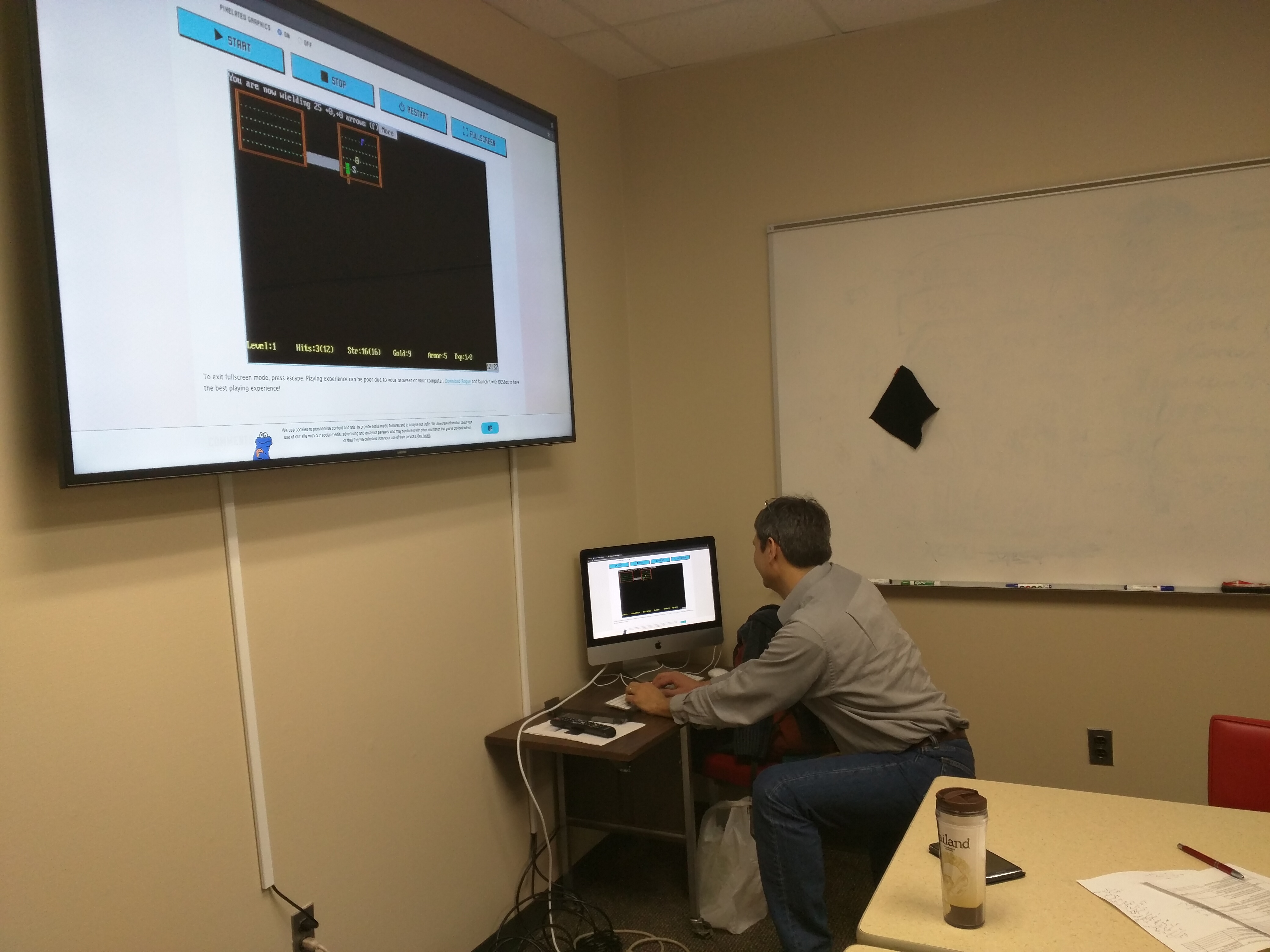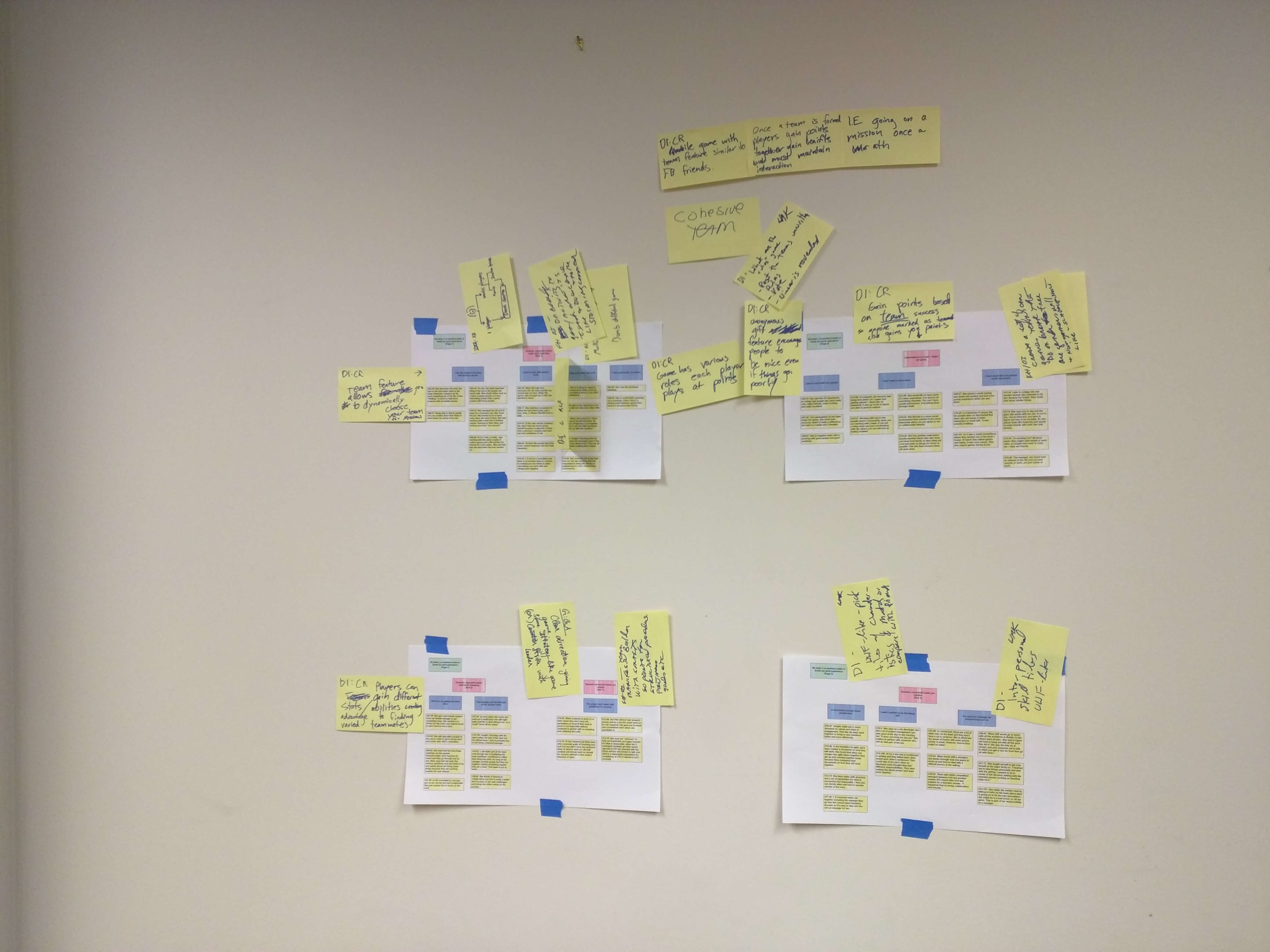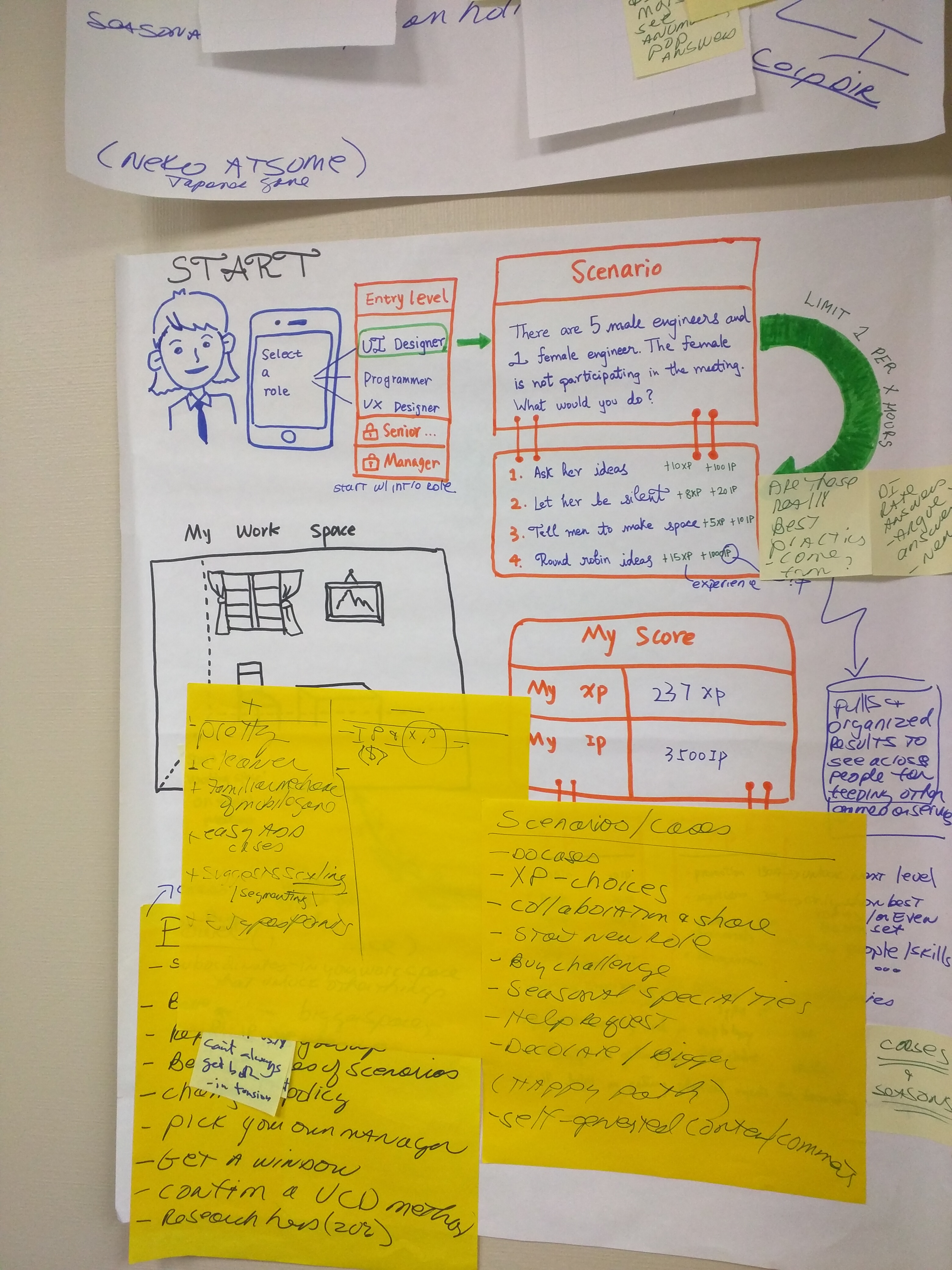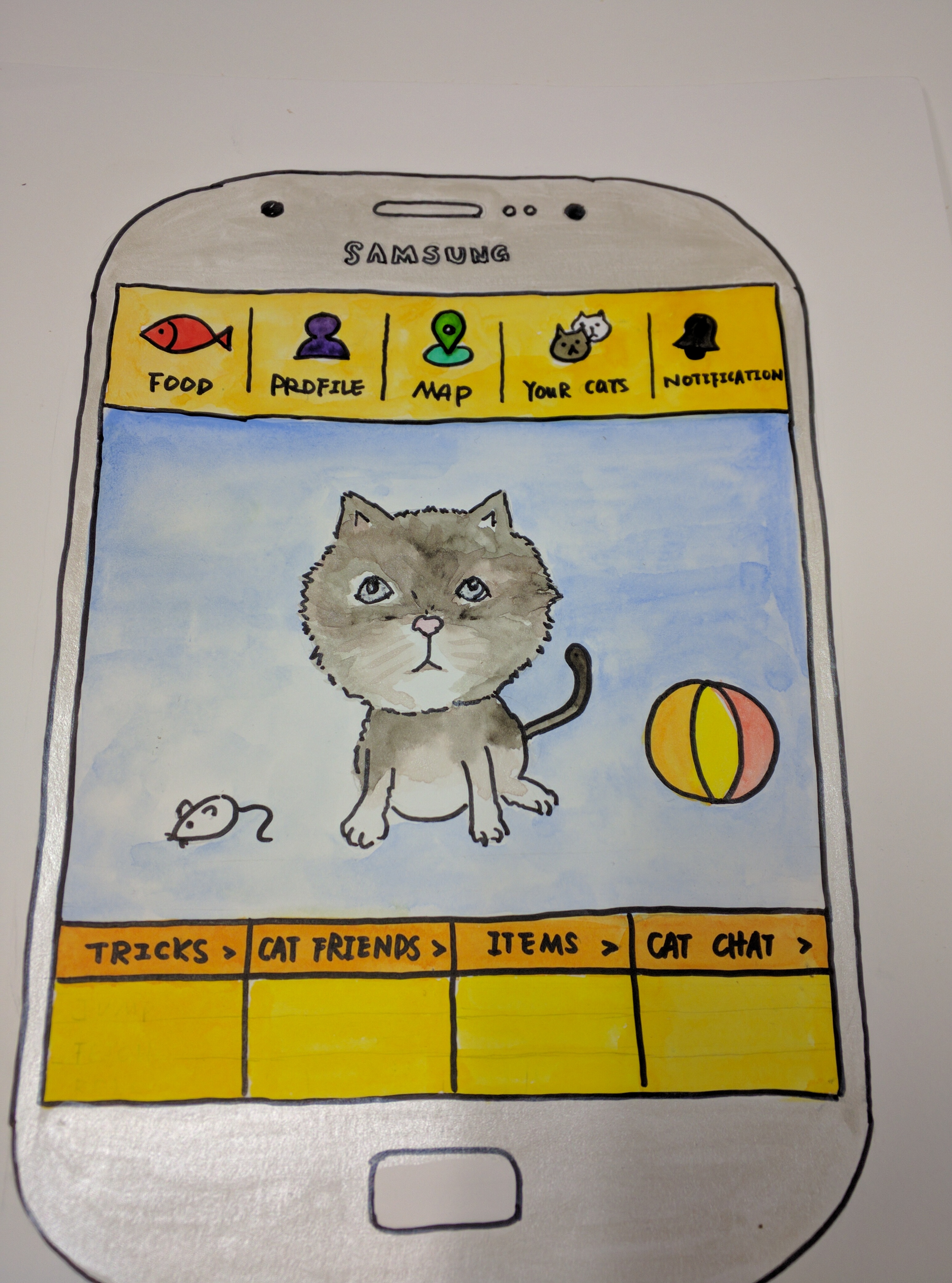Meow Manager
Go to PrototypeSummary
Karen Holtzblatt, a pioneer in Contextual Design Methods, found that many women in the technology sector were leaving it in the intermediate stages of their career.Our project goal was to find out why, and find innovative solutions to this issue.
Our diverse team worked hard to come up with two games.
Onboarding
Our mentor, Karen, introduced us to contextual design with a series of presentations. We learned how to conduct user interviews effectively, and what contextual design entails.User Interviews
We had initally planned to split interviewing amongst ourselves, but we had to wait for IRB approval. Hence, we did not do any initial user interviews ourselves. We did, however provide feedback to one of our professors (Bill), on his interpretation of the interviews.Game Research
Our team members introduced us to various types of games, from Adventure games to Board Games. One team member even brought a board game and made us understand it. It was educational for us to understand the generational differences in our understanding of gaming.
Idea Generation
We went through our data, filtered them, and each of us used sticky notes to write down ideas and insights.
Brainstorming
We went through our ideas, and came up with games. It was lead by our game expert team member, who suggested many interesting ideas.Idea Shortlisting
We came up with many ideas, and shortlisted them to a select few, based on team votes. Our team leader, Karen, had a veto on our decisions. Our ideas were, a office-decorating game, a maze, a cat game, and a board game.
Visioning
We started to elaborate on our design ideas, and noted the pluses and minuses of our designs. We iterated through them many times.

Concept Boards
We used a piece of cardboard, to present our game idea visually. Our artist, Xuan, took a lead and did a great job on them.
Paper Prototypes
Our artist, Xuan, helped us create paper prototypes for our game, which we used to perform user interviews.
Prototype Interviews
We used the paper prototypes created, to get feedback from the users. Some design features were added and others were deleted.Implementation
I was a lead in this part. I explored many types of implementation methods (Android, iOS, Web, Desktop), created some prototypes using HTML/CSS/JS and then finally used Phaser.js to implement the gaming part.Our game ended up needing social features, so I explored Socket.io and XAMPP protocols, and ended up on using basic AJAX for them.
In addition to this, I explored various server configurations to ensure that the system was fault-tolerant, secure and could handle many users.
I had to struggle to adapt to various design changes within an extremely short time-frame and had to convince other team members on the feasibility of some of their requests.
The early system was prone to bugs, and was iteratively improved. There were many areas of improvement, including UI design, social media functionality, cross-browser bugs, etc.